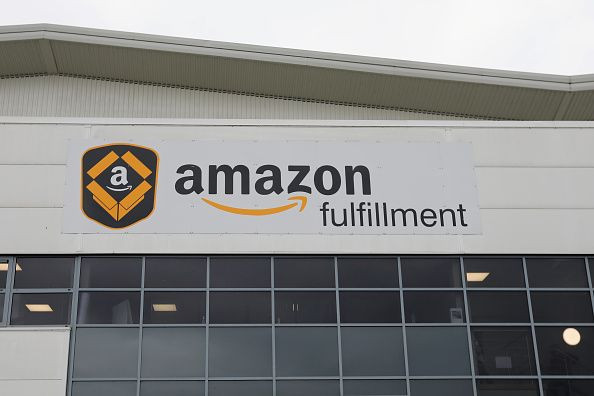Amazon's One-Day Shipping Is Winning Over Would-Be Brick-And-Mortar Shoppers

Amazon's (NASDAQ:AMZN) Prime shipping benefits have changed considerably over the last six months. The giant, high-growth retailer is now sending most packages with one-day delivery instead of two. Not only that, it's removed the barrier for many sub-$5 items on its marketplace that shoppers could previously only ship as an add-on to a larger order.
The efforts are paying off. More shoppers are likely to buy low-cost items from Amazon with Prime's one-day shipping than they are to buy them in a brick-and-mortar store, according to a CivicScience survey. Most interesting is the majority of consumers that are favorable toward Target (NYSE:TGT) and Walmart (NYSE:WMT) also said they're likely to buy inexpensive items on Amazon versus in-store.
As Target and Walmart make efforts to grow their e-commerce sales and take on Amazon, the latter is swiftly moving to take sales from their main revenue channel.
The results speak for themselves
The impact of Amazon's one-day shipping efforts has been quite noticeable in just a couple quarters. Its top-line growth in North America accelerated in each of the last two quarters after a continuous slowdown in growth. CFO Brian Olsavsky specifically points to the move to one-day shipping as the catalyst for that growth during the latest earnings call.
Investors should note Amazon is still working to accelerate shipping speeds for tens of millions of items and also remove the add-on requirements from many sub-$5 items. The early success of its efforts should only grow as it makes further progress on those initiatives. As more consumers become aware of the perks, Prime membership should get a boost through both greater customer retention and gross additions.
Growing Prime memberships is increasingly challenging for Amazon, as it now counts about half of the U.S. shopping population as a Prime member. But if even faster delivery on everyday essential fuels Prime memberships, the problem will only get worse for brick-and-mortar competitors.
CivicScience's survey notably only asked existing Prime members about their preferences for shopping on Amazon versus in-store. But new Prime members, those that are specifically attracted to one-day shipping on convenience items, may be even more likely to buy those items on Amazon versus their local Target or Walmart.
One-day shipping might not be the only factor
The convenience of one-day shipping might not be the only thing swaying Prime members to shop on Amazon, CivicScience's Noah Brode points out. Consumers that are more likely to order sub-$5 items on Amazon instead of in-store are also more likely to have viewed the item in a store only to buy it online later. That suggests they're shopping for a better price.
Indeed, Amazon's gotten aggressive with its pricing on certain items in the second half of the year. It's possible Amazon's adjusted its pricing algorithm to highlight that it's now shipping more items without the pesky add-on requirement in order to establish a habit in consumers.

Many sub-$5 items are consumables. Things like toiletries, batteries, or other items that necessitate repeat purchases. If Amazon can establish a habit of shopping for those items on its marketplace, it can eventually raise prices back up while acquiring more Prime members.
Walmart and Target can't compete
Both Walmart and Target have their own same-day and next-day delivery programs. But in order for customers to get free delivery, they have to make minimum orders. Neither company can afford to deliver one-off items to customers like Amazon can. That's because they don't own the same logistics network or level of scale. They'd lose too much on small orders for it to be worthwhile.
To be clear, Amazon is very likely losing money on one-off orders of convenience items. But it's able to lose less money than the competition. Meanwhile, it's driving Prime memberships, which has other benefits for Amazon's business. And increasing membership is only going to make the challenge harder to overcome for Walmart and Target.
This article originally appeared in the Motley Fool.
Adam Levy owns shares of Amazon. The Motley Fool owns shares of and recommends Amazon. The Motley Fool has a disclosure policy.




















